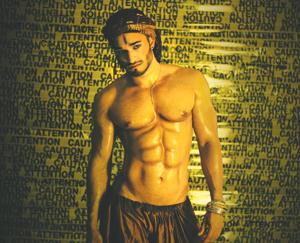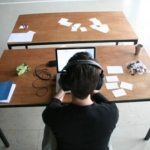Like most discussions of race, conversations on colour in the queer community often fall into a black versus white paradigm, with the occasional “no Asians please” thrown in for good measure.
“When you’re queer and South Asian you’re invisible in both your communities,” says Shazad Hai, co-founder of the Rangeela collective. “You don’t hear guys saying things like ‘I’m not into brown boys.’ They just forget we exist at all.”
Rangeela is working to change that, in part by hosting quarterly dance parties aimed at building community. Its Pride event, The Ultimate Bollywood Ball, celebrates its second anniversary this year. Mixing Bollywood and bhangra with top 40 and house, it’s an environment for queer South Asians to celebrate their overlapping identities.
“It’s a space where people can dance to the music they grew up with and the music they listen to now,” Hai says. “These are the songs we’d listen to with our families at weddings, so there’s often a strong nostalgic connection. The challenge at those traditional events was that you couldn’t be yourself. Being able to celebrate your culture with other queer South Asians is important because it’s easy to feel isolated.”
Hai is keenly aware of the toll isolation can take. Working as outreach coordinator for the Alliance for South Asian AIDS Prevention (ASAAP, which is also the beneficiary of the event’s proceeds), he deals with education initiatives for his community on a daily basis. The organization was born out of community activism in 1989, after an HIV-positive South Asian couple died in isolation because there were no services offered in their language.
“Having culturally specific services is essential for HIV prevention,” Hai says. “Many people are coming here from other countries where there is no HIV education at all, and they’re struggling to learn the language and adapt to the new culture while staying true to who they are.”
Though Rangeela provides a natural home for brown folks, Hai stresses it’s a welcoming environment for all colours; inclusivity is important to him, given his experience of isolation growing up. He was raised in a predominantly white area of Calgary, and finding any space he could call his own was nearly impossible.
“Even though there weren’t a lot of brown people in the city, my skin colour didn’t really become an issue until I started to explore the queer community,” he says. “I was immediately made to feel different from everyone else. Finding close gay friends was hard.”
Hai’s first trip to Toronto gave him a glimpse of what was possible, when he attended his first queer South Asian event four years ago.
“In Calgary I had to be either gay or South Asian but could never be both at the same time,” he says. “[Coming to Toronto] was one of the most liberating experiences of my life because it brought my two worlds together. I want to be able to offer that to other people by giving a face to the queer South Asian community and letting people know they are not alone.”


 Why you can trust Xtra
Why you can trust Xtra


